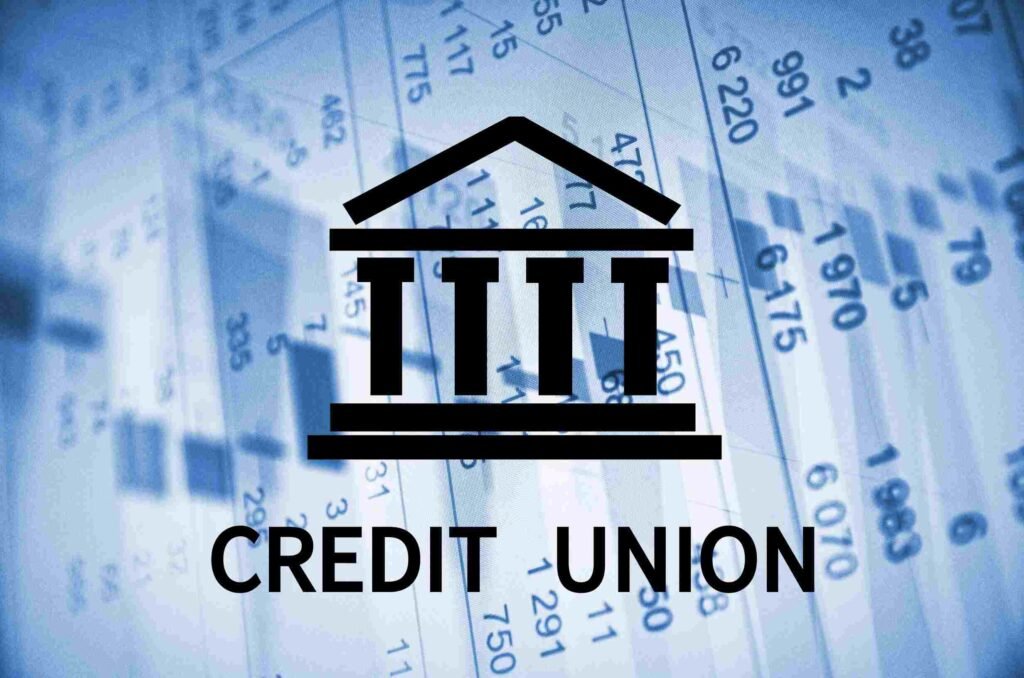Attracting visitors to your website is only half the battle. The real challenge lies in converting that traffic into leads—people who are genuinely interested in what you offer and ready to take action. With high-intent conversions as your goal, SEO content needs to go beyond simply ranking on search engines. It must be crafted with purpose, speaking directly to the needs and motivations of potential leads.
This guide walks you through how to optimize your SEO content for high-intent conversions. By understanding user intent, leveraging specific SEO techniques, and crafting content that resonates, you can turn traffic into high-quality leads that drive real business growth.
Understanding High-Intent Conversions and Why They Matter
What Is a High-Intent Conversion?
High-intent conversions happen when visitors come to your website with a clear purpose, often looking to solve a specific problem, make a purchase, or learn more about a solution. Unlike casual browsers or information-seekers, high-intent users have a strong intent to engage or buy. These visitors are valuable because they’re more likely to convert into leads and customers, making them an ideal target for content optimization.
Why High-Intent Conversions Boost ROI
Focusing on high-intent conversions leads to more efficient marketing. Rather than casting a wide net, you target users who are ready to take action. These conversions often result in higher ROI because you’re connecting with people who are already motivated to learn more about your offering. High-intent conversions streamline your funnel, bringing in leads that are easier to nurture and convert, saving time and resources.
Step 1: Identify and Understand User Intent

Different Types of User Intent and Their Role in Conversions
Understanding user intent is key to crafting content that resonates. In SEO, user intent is usually categorized into four types:
- Informational Intent: Users want to learn about a topic (e.g., “What is SEO?”).
- Navigational Intent: Users are looking for a specific website or page (e.g., “HubSpot login”).
- Transactional Intent: Users are ready to make a purchase or commit (e.g., “buy CRM software”).
- Commercial Investigation: Users are comparing options before making a decision (e.g., “best CRM software for small business”).
For high-intent conversions, your focus should be on transactional and commercial investigation intents. These types of visitors are actively looking for solutions and are closer to making a decision. By aligning your content with these intents, you’re more likely to capture leads ready to convert.
How to Identify Intent in Search Queries
Keyword research tools like Ahrefs, SEMrush, or Google Keyword Planner can help you identify search queries that indicate high intent. Look for keywords with phrases like “buy,” “best,” “top,” “pricing,” or “compare.” These terms show that users are ready to make a decision or are exploring their options.
For example, if you’re a CRM provider, targeting keywords like “best CRM for small businesses” or “CRM software pricing” will bring in visitors further along in their decision-making process. These are users with high intent, and optimizing your content for these keywords can increase the likelihood of conversions.
Step 2: Create Content that Addresses High-Intent Keywords
Focus on Solution-Oriented Content
To capture high-intent traffic, create content that directly addresses users’ needs and solutions they’re searching for. Solution-oriented content speaks to specific problems, offering a clear path to resolution. For example, instead of writing a general article on “CRM benefits,” consider content that focuses on solving real problems, like “How a CRM Can Boost Sales for Small Businesses.”
When your content provides practical solutions, you build trust with your audience. High-intent users are more likely to view your business as a reliable partner, increasing the chances of conversion.
Use Long-Tail Keywords for Specificity
Long-tail keywords are more specific and often indicate high intent. While these keywords usually have lower search volumes, they attract more qualified traffic. For example, “best CRM software for real estate agents” attracts a niche audience with a specific need, increasing the likelihood of conversion.
Using long-tail keywords throughout your content—especially in headers, subheaders, and naturally within the text—helps you reach visitors looking for precise solutions. These keywords capture high-intent leads that are ready to engage, bringing in traffic that’s more likely to convert.
Step 3: Optimize On-Page Elements for Engagement
Craft Compelling Meta Titles and Descriptions
Your meta titles and descriptions are often the first impression potential leads get of your content. High-intent visitors need to know at a glance that your content will meet their needs. Use clear, benefit-driven language that reflects the solution your page offers.
For example, a meta title like “Best CRM Software for Small Business – Increase Sales & Simplify Operations” tells the user exactly what to expect. The description should reinforce this message, highlighting the unique value you offer. By setting clear expectations, you attract high-intent users looking for specific solutions.
Use Clear, Engaging Headers
Headers break up your content and make it easier for readers to scan. For high-intent users, headers should guide them through the content logically, from understanding the problem to exploring the solution. Use headers to highlight main points and benefits, keeping the structure intuitive.
For instance, in an article about “Choosing the Right CRM for Small Businesses,” use headers like “Top Benefits of Using a CRM,” “How to Compare CRM Options,” and “Factors to Consider Before Buying.” These headers cater to high-intent users’ need for actionable information, helping them move closer to conversion.
Incorporate Strong Call-to-Action (CTA) Phrases
A clear, persuasive call to action is essential for converting high-intent users. CTAs guide visitors toward the next step, whether that’s signing up for a demo, requesting a quote, or downloading a guide. Ensure your CTA stands out visually and uses action-oriented language.
For example, instead of a generic “Learn More,” try “Get Your Free CRM Demo Now.” This CTA speaks directly to high-intent users by offering immediate value. Position CTAs strategically throughout the content, not just at the end, to capture leads who may be ready to act sooner.
Step 4: Leverage Trust-Building Content Elements

Include Testimonials and Case Studies
High-intent users are looking for proof that your solution works. Incorporate testimonials, case studies, or client success stories that demonstrate real results. These elements provide social proof, building trust and credibility that can tip the scales in favor of conversion.
For instance, in an article on “How Our CRM Transforms Small Business Sales,” include a brief case study highlighting how a similar customer saw improved efficiency and higher sales. By showing concrete results, you reinforce your claims and help users visualize the value your solution offers.
Highlight Key Benefits with Visuals
Visuals like charts, infographics, and comparison tables can make your content more compelling. For high-intent users, visuals quickly communicate the main benefits and features of your solution, helping them make a decision faster.
For example, in a pricing guide for a CRM, include a comparison chart of different plan options and their features. This makes it easy for potential leads to see the value of your offering at a glance, reinforcing their intent to convert.
Display Trust Badges and Certifications
Displaying trust badges or certifications, such as “Secure Checkout” or “Data Privacy Certified,” reassures high-intent visitors that your business is credible and trustworthy. If you’re in an industry where security is a concern, trust badges can make a significant impact on conversions.
For example, a “Trusted by 5,000+ Businesses” badge can signal reliability to new visitors, while a “Secure Payment” badge reassures customers during checkout. These subtle signals help instill confidence, making high-intent users more comfortable taking the next step.
Step 5: Optimize Content for Mobile Experience
Ensure Mobile-Friendly Design
Mobile users are an increasing portion of web traffic, and high-intent visitors expect a seamless mobile experience. Ensure your website and content are mobile-responsive, loading quickly and displaying clearly on smaller screens. High-intent visitors are more likely to convert if they don’t have to struggle with layout issues or long loading times.
For instance, make sure CTAs are easy to tap, text is readable, and images resize correctly on mobile. Use tools like Google’s Mobile-Friendly Test to ensure your content is optimized for mobile users, capturing leads who prefer to browse on their phones.
Simplify Navigation and Forms on Mobile
Mobile users are often in a hurry, so simplify your navigation and any forms on your site. Use easy-to-access menus and limit form fields to the essentials. High-intent users are more likely to fill out a short form or click a clear button than navigate through a complicated layout.
For example, if you’re collecting lead information, keep the form to just name, email, and phone number. Avoid unnecessary fields that could create friction. A streamlined mobile experience helps capture high-intent leads who value convenience and speed.

Related: Check out our free tools:

Step 6: Use Retargeting Strategies to Recapture High-Intent Visitors
Set Up Retargeting Campaigns for Abandoned Visitors
Even high-intent visitors may leave your site without converting, often due to distractions or needing more time to decide. Retargeting campaigns allow you to follow up with these users, reminding them of the value you offer and encouraging them to return.
For example, if a visitor viewed your CRM software pricing page but didn’t sign up for a demo, you can retarget them with ads offering a free demo or discount. Retargeting keeps your brand top-of-mind, nudging high-intent users to take the next step.
Customize Retargeting Messages for High Intent
Personalize retargeting messages to reflect users’ specific interests. For high-intent visitors, use ads that emphasize benefits, offer solutions, or provide incentives for returning. This tailored approach resonates more with users who are already interested, increasing the chances of conversion.
For instance, if a visitor explored your “CRM features” page, a retargeting ad highlighting specific benefits like “Save Time on Customer Management” can reinforce their interest. Tailored retargeting helps recapture leads by addressing their needs directly.
Step 7: Continuously Test and Refine Content for High-Intent Conversion

A/B Test CTAs, Headlines, and Visuals
Testing different elements of your content allows you to understand what resonates most with high-intent users. Experiment with various headlines, CTA phrases, and visuals to see what drives the highest conversions. Track metrics like click-through rates, form submissions, and time on page to identify which versions perform best.
For example, try A/B testing two different CTAs: “Request a Demo Today” versus “See How Our CRM Can Grow Your Business.” By analyzing the results, you gain insights into what motivates high-intent visitors to convert, allowing you to optimize content accordingly.
Monitor Conversion Rates and Refine Based on Data
Regularly review your conversion rates for high-intent content, looking at which pages and strategies drive the most leads. Use analytics tools to track user behavior, identifying drop-off points or areas of improvement. By refining your approach based on real data, you can enhance the performance of your content over time.
For instance, if your product comparison page has a high exit rate, consider revising the layout or adding more persuasive elements like customer testimonials. Continuous refinement based on data allows you to fine-tune content, increasing its effectiveness in capturing high-intent leads.
Step 8: Leverage Lead Magnets to Capture High-Intent Visitors
Offer Targeted Lead Magnets Aligned with User Intent
Lead magnets are valuable resources offered to visitors in exchange for their contact information, such as an email address. For high-intent visitors, lead magnets should be highly relevant and offer immediate value. Instead of generic downloads, create targeted resources that directly address the needs and questions of high-intent users. For example, if you’re targeting potential CRM buyers, offer a detailed “CRM Comparison Guide” or a “Free ROI Calculator for CRM Software.”
These resources give users something they can act on immediately, positioning you as a trusted source of valuable information. By aligning your lead magnet closely with the content they’re already engaging with, you increase the likelihood they’ll opt-in and provide their contact information.
Integrate Lead Magnets Seamlessly into Content
Instead of simply adding a lead magnet at the end of your article, consider embedding it within the content in a natural, non-disruptive way. Mention the lead magnet where it fits naturally within the flow of the article, such as after introducing a concept or sharing an insight that the resource further elaborates on.
For instance, if your article covers “Best Practices for CRM Implementation,” you might introduce your lead magnet after discussing an initial setup strategy: “Looking for a step-by-step guide to setting up your CRM? Download our free implementation checklist to get started.” This approach integrates the lead magnet organically, appealing to readers who are already invested in the topic.
Step 9: Build Content Funnels for High-Intent Nurturing

Create a Content Journey That Guides Users from Awareness to Conversion
A content funnel is a structured path that takes visitors from initial discovery to conversion. For high-intent visitors, this journey can be shorter and more direct, but it still needs to provide value at every stage. Start with awareness-level content that educates users about their problem or your solution, then follow up with deeper content that addresses comparisons, benefits, and testimonials, leading toward a final CTA for conversion.
For example, a visitor may land on an awareness article like “Why Small Businesses Need a CRM.” From there, guide them to a consideration-level article such as “Top CRM Features for Growing Businesses.” Finally, present them with conversion-focused content like “Request a Demo of Our CRM Solution” to encourage them to take the next step.
Use Retargeting and Email Drip Campaigns to Nurture Leads Through the Funnel
Not all high-intent visitors will convert immediately, which is where retargeting and email nurturing come in. If a visitor downloads a lead magnet or interacts with specific content, set up a drip email campaign that delivers additional relevant content, keeping them engaged with your brand over time. Retargeting ads can serve as reminders for those who left the site without converting, inviting them to return and continue down the content funnel.
For example, if a user downloads your “CRM Comparison Guide,” follow up with an email series that highlights specific benefits, success stories, or a demo invitation. These touchpoints keep your brand top-of-mind, encouraging high-intent users to continue down the path to conversion.
Step 10: Analyze and Adjust Content Based on Lead Quality Data
Measure Lead Quality, Not Just Volume
Simply bringing in more leads isn’t enough; what matters is the quality of those leads. Use your CRM or analytics platform to assess lead quality, looking at metrics like engagement, conversion rates, and sales cycle length. Track which content pieces and landing pages generate high-quality leads, allowing you to refine your content strategy to focus on what’s truly working.
For instance, if a particular blog post consistently drives leads that convert faster or have higher purchase values, consider creating more content around similar topics or formats. By analyzing lead quality data, you can identify and replicate content that consistently attracts high-intent, ready-to-buy visitors.
Continuously Refine Content Strategy Based on Conversion Data
Regularly review your conversion data to see which strategies and content pieces are most effective at turning high-intent visitors into leads. Adjust your SEO approach, content themes, or CTAs based on performance metrics. Conversion data will reveal patterns, showing you which types of content resonate with high-intent users, allowing you to make data-driven adjustments.
For example, if video content performs particularly well in driving conversions, consider incorporating more video or multimedia elements into your content. By staying flexible and adapting based on performance insights, you can ensure that your SEO content remains optimized for high-intent conversions over time.
Final Thoughts: Turning High-Intent Traffic into Quality Leads
Optimizing SEO content for high-intent conversions is a powerful way to turn traffic into meaningful leads. By understanding user intent, targeting specific keywords, and crafting solution-oriented content, you create an experience that speaks directly to users ready to engage. High-intent conversions aren’t just about attracting visitors—they’re about connecting with the right ones and guiding them toward a decision.
From compelling CTAs to trust-building elements and mobile optimization, each step helps move high-intent users closer to conversion. With ongoing testing and refinement, you ensure your SEO content consistently delivers high-quality leads, fueling growth and maximizing the impact of your digital marketing efforts.
When done right, content optimization goes beyond clicks and rankings. It’s a strategic approach to lead generation, helping you build a pipeline of engaged, ready-to-convert visitors who see the value in what you offer—turning traffic into real, measurable business growth.
READ NEXT:
- Are Vanity Metrics Killing Your Marketing Efficiency? Here’s What to Track Instead
- Pinpointing Digital Marketing ROI: Why Your Metrics Aren’t Telling the Full Story
- Unlocking Real ROI in Digital Marketing: The Hidden Costs Draining Your Budget
- How Misaligned Marketing Funnels Are Blocking Your ROI Potential
- Best Digital Marketing Agency In Santa Ana, California
- Best Digital Marketing Agency In San Francisco, California



















